For 1990-2009 cars only
Tools Required
J 44220 Engine Lift Bracket
Removal Procedure
- Remove the hood. Refer to Hood Replacement in Body Front End.
- Disconnect the negative battery cable. Refer to Battery Negative Cable Disconnection and Connection in Engine Electrical.
- Drain engine coolant. Refer to Cooling System Draining and Filling in Engine Cooling.
- Recover the refrigerant. Refer to Refrigerant Recovery and Recharging in Heating, Ventilation and Air Conditioning.
- Remove the oil pan drain plug and drain the oil.
- Install a suitable plug into the oil pan after draining to prevent any oil leakage during the rest of the procedure.
- Remove the air cleaner assembly. Refer to Air Cleaner Assembly Replacement in Engine Controls - 4.2L.
- Remove the throttle body. Refer to Throttle Body Assembly Replacement in Engine Controls - 4.2L
- Remove the manifold absolute pressure (MAP) sensor. Refer to Manifold Absolute Pressure Sensor Replacement in Engine Controls - 4.2L
- Remove the washer solvent container. Refer to Windshield Washer Solvent Container Replacement in Wipers/Washer Systems.
- Remove the grill. Refer to Grille Replacement in Exterior Trim.
- Remove the headlamp housing. Refer to Headlamp Housing Panel Replacement in Body Front End.
- Remove the radiator support brace. Refer to Radiator Support Diagonal Brace Replacement in Body Front End.
- Remove the hood latch. Refer to Hood Latch Support Replacement in Body Front End.
- Disconnect A/C lines at the condenser.
- Disconnect the transmission cooler lines at the engine, not the radiator.
- Remove the cooling fan and the shroud tilting the radiator forward, and the cooling fan and the shroud rearward for clearance. Refer to Cooling Fan and Shroud Replacement in Engine Cooling.
- Remove the radiator with condenser and transmission cooler lines. Refer to Radiator Replacement in Engine Cooling.
- Remove the drive belt. Refer to Drive Belt Replacement .
- Remove the power steering pump bolts and lay the pump aside.
- Ensure the heater hoses at the heater core are disconnected.
- Remove the secondary air injection (AIR) reaction solenoid valve. Refer to Secondary Air Injection Solenoid Valve Replacement in Engine Controls - 4.2L.
- Install the lift hook J 44220 to the AIR port on the engine head.
- Disconnect the oxygen sensor electrical connector.
- Disconnect the A/C line at the accumulator.
- Disconnect the front axle actuator electrical connector.
- Disconnect the camshaft phaser actuator valve electrical connector.
- Unclip the transmission cooler lines from right side of the engine block.
- Disconnect the ignition coil harness connectors.
- Carefully disconnect harness retainer at clips (1) and remove.
- Remove power brake hose at booster.
- Remove the PCM. Refer to Powertrain Control Module Replacement in Engine Controls - 4.2L.
- Disconnect the fuel lines at the fuel pressure regulator and cap lines. Refer to Fuel Pressure Regulator Replacement in Engine Controls - 4.2L.
- Remove all harnesses from the engine harness bracket.
- Disconnect the front differential vent hose from the engine harness bracket.
- Remove the engine harness bracket bolt and remove bracket.
- Disconnect starter electrical connections (1).
- Disconnect the A/C pressure sensor and clutch electrical connector.
- Disconnect generator electrical connector and battery lead (1).
- Disconnect the knock sensor electrical connector.
- Disconnect the crankshaft sensor electrical connector.
- Disconnect the camshaft sensor electrical connector.
- Remove 4 grounds on the left side of the block (1).
- Raise the vehicle. Refer to Lifting and Jacking the Vehicle in General Information.
- Remove the wheel drive shafts, left and right. Refer to Wheel Drive Shaft Replacement in Wheel Drive Shafts.
- Remove the propeller shaft from the front axle pinion yoke. Refer to Front Propeller Shaft Replacement in Propeller Shaft.
- Remove the engine protection shield. Refer to Engine Protection Shield Replacement in Body Front End.
- Disconnect the exhaust pipe from the exhaust manifold and slide the exhaust pipe backward slightly.
- Remove the fuel tank shield, if equipped. Refer to Fuel Tank Shield Replacement in Frame and Underbody.
- Disconnect the secondary AIR pipes from the secondary AIR pump.
- Remove the torque converter bolt access cover.
- Remove the torque converter bolts.
- Place a jack on the transmission oil pan for support.
- Remove the transmission support. Refer to Transmission Support Replacement in Frame and Underbody.
- Lower the transmission enough to reach the top bell housing bolts.
- Remove the top 4 bell housing bolts, there may be 2 harness clips that will need to be removed in order to have access to 2 of the top bolts.
- Raise the transmission.
- Reinstall the transmission support using only 2 through bolts.
- Remove the remaining bell housing bolts, for a total of 11 bolts.
- Remove the left and right engine lower mount nuts.
- Disconnect the oil pressure switch electrical connector.
- Lower the vehicle.
- Remove the left upper engine mount nut (1).
- Remove the right upper engine mount nut (1).
- Install the engine hoist.
- Raise the engine out of the compartment slowly keeping the transmission supported.
- Remove both engine mounts for clearance.
- Remove the fasteners securing the AIR pipes to the back of the engine head.
- Remove the AIR pipes from the vehicle.
- Continue raising the engine out of the vehicle.
- Install the engine to the engine stand.
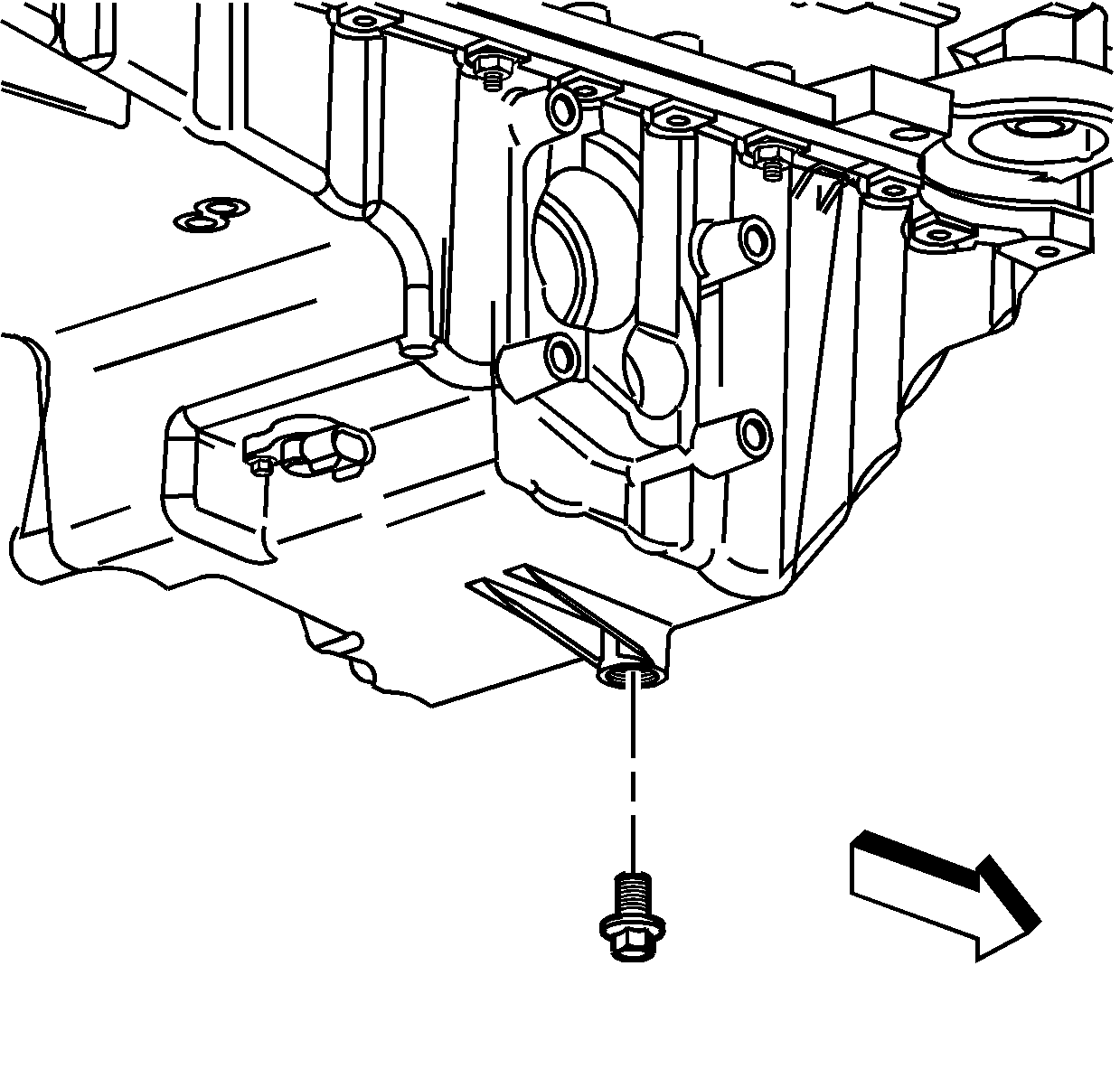
Important: Keep drain plug removed during engine removal and installation.
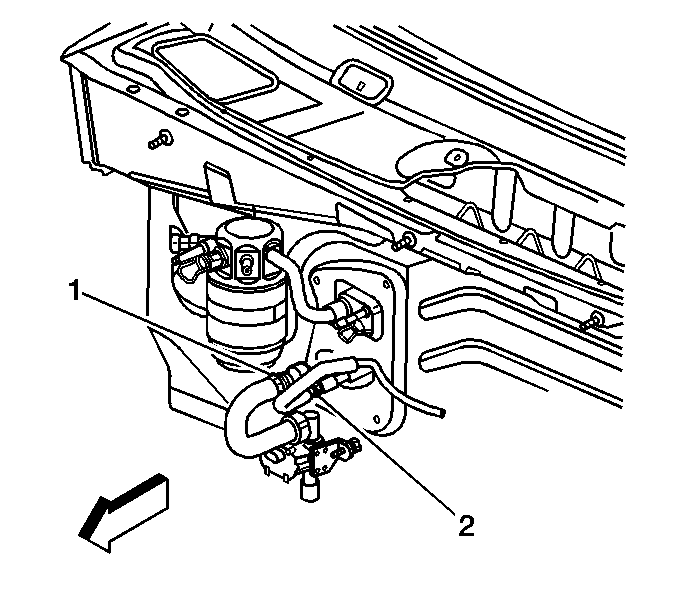
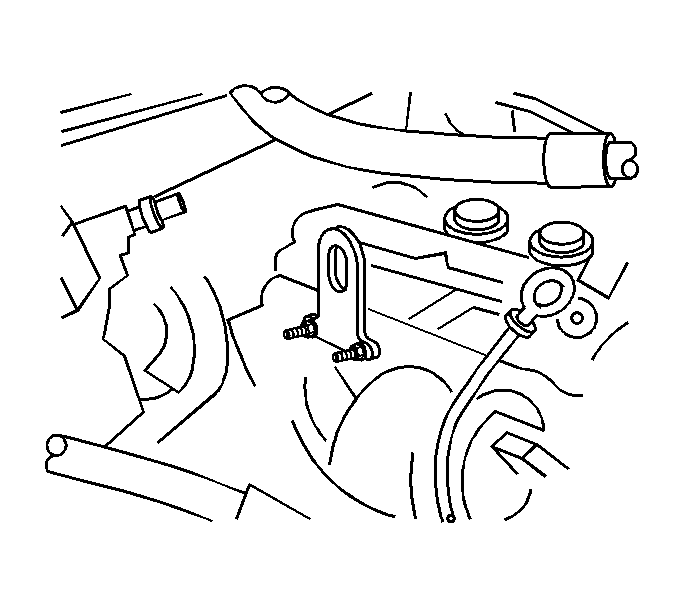
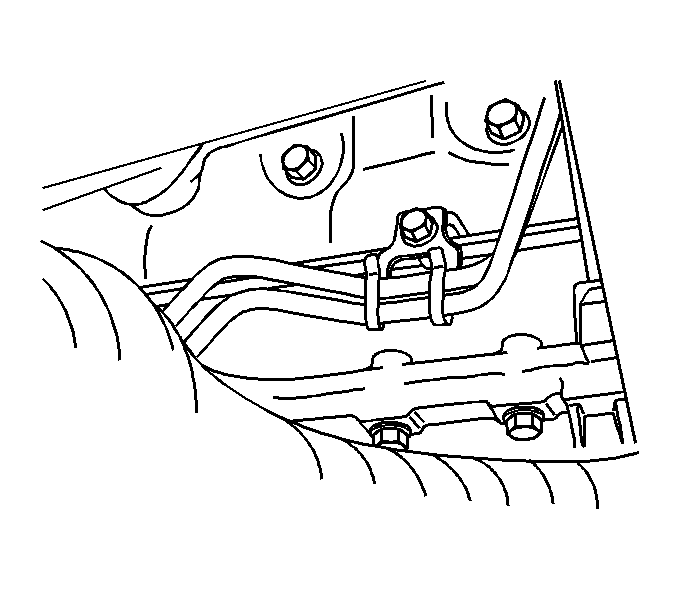
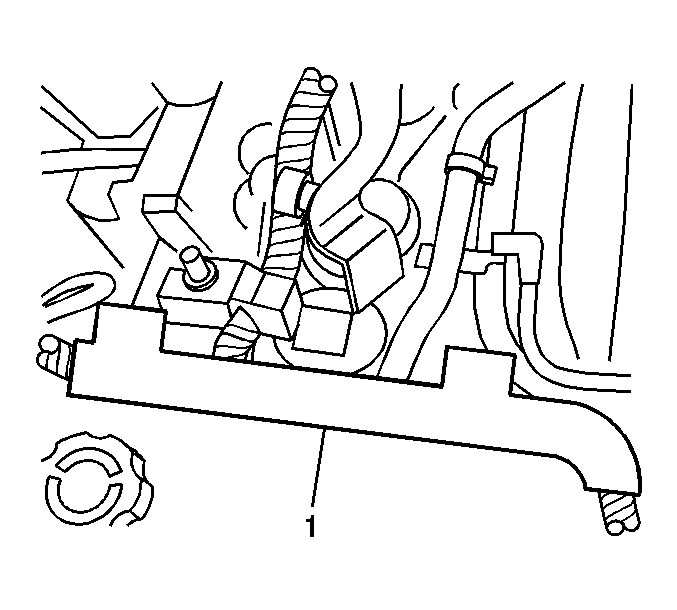
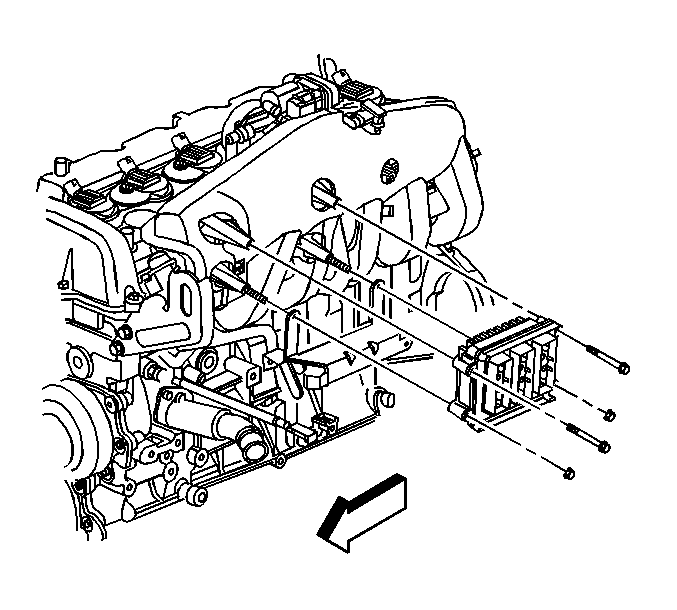
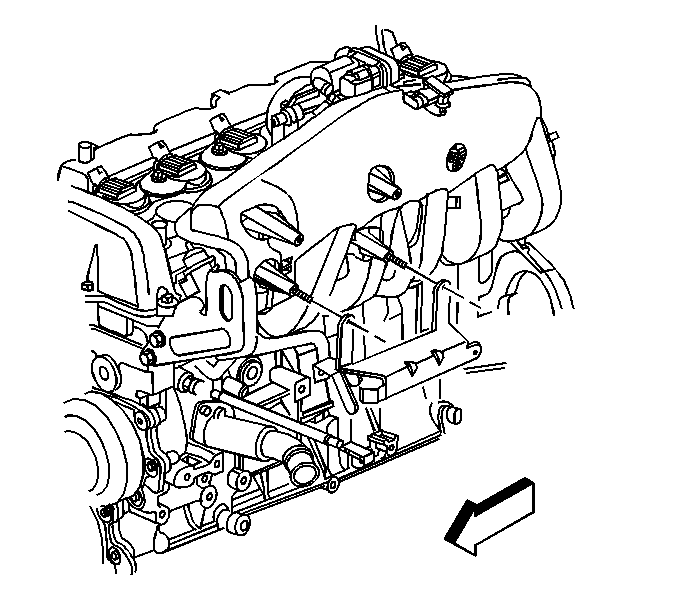
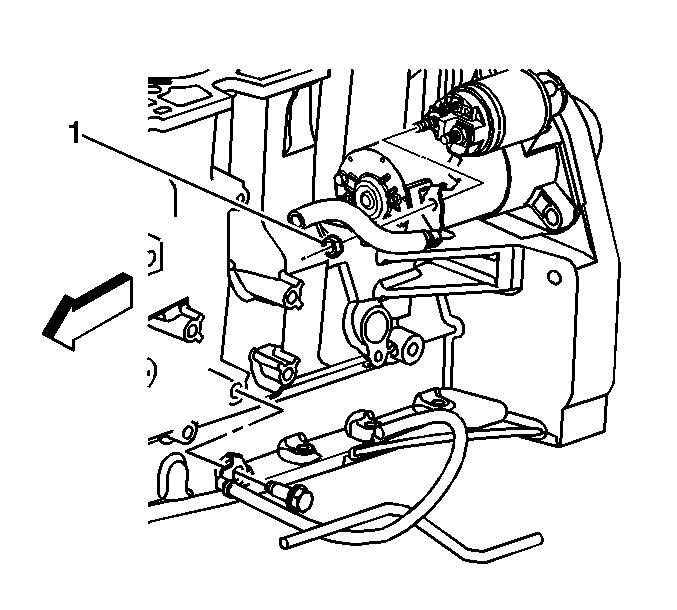
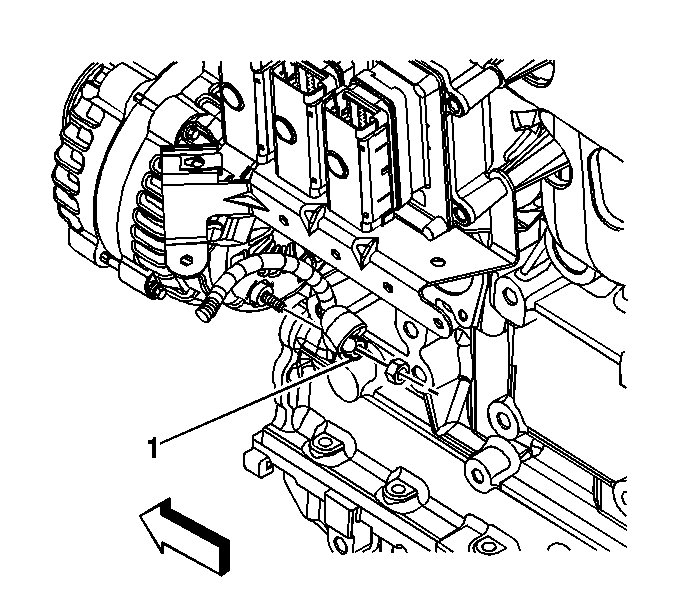
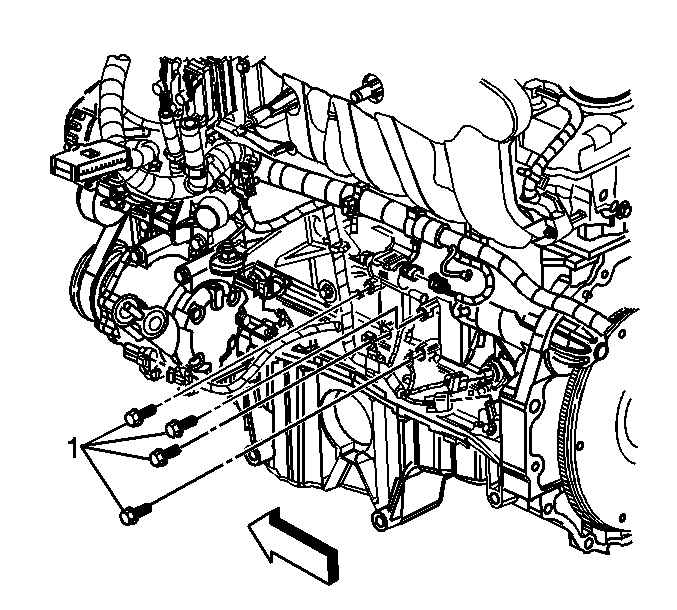
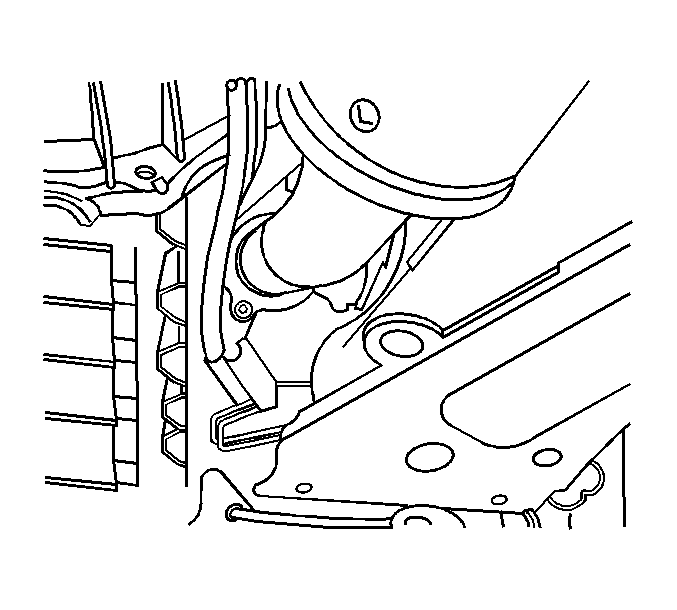
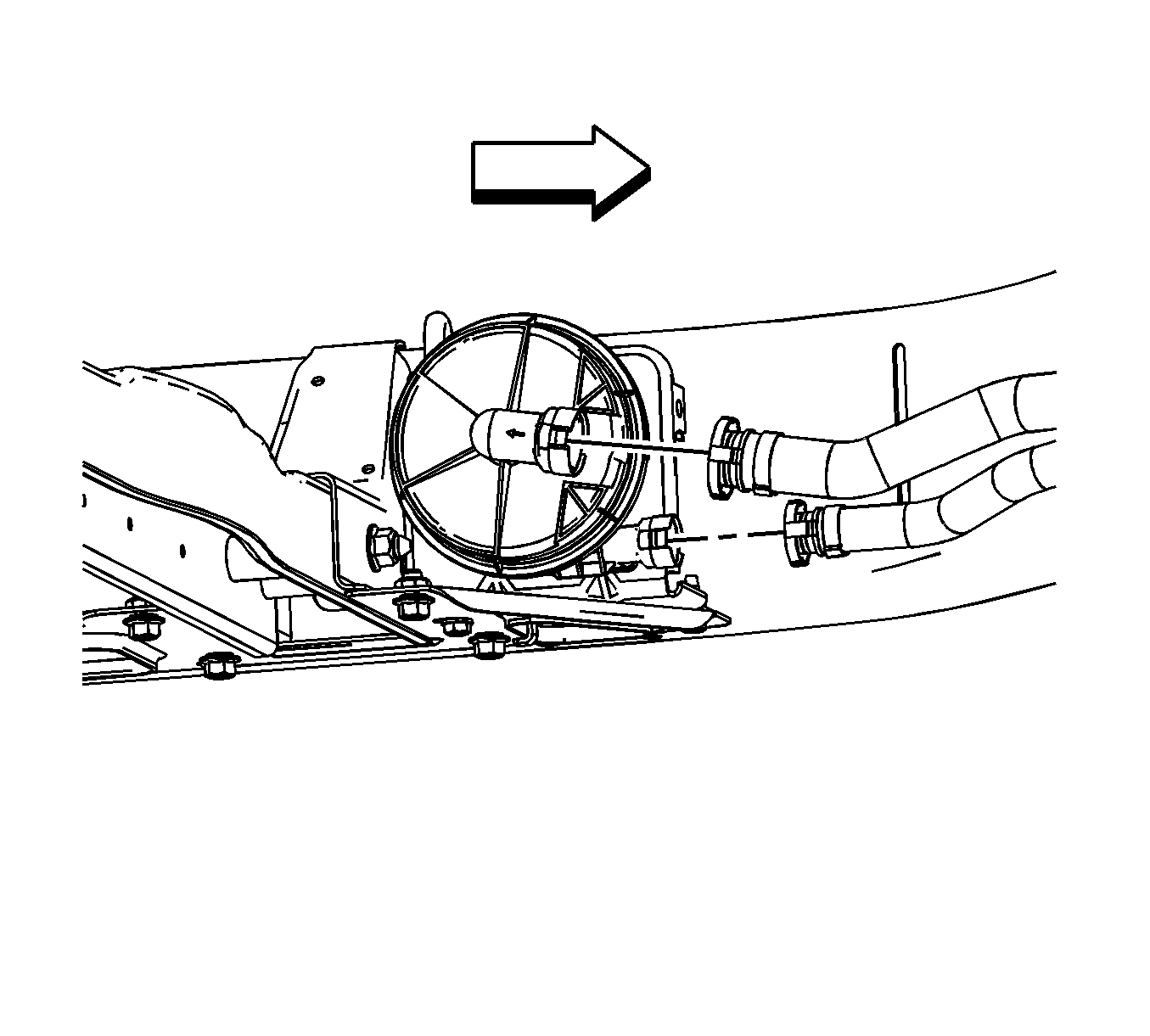
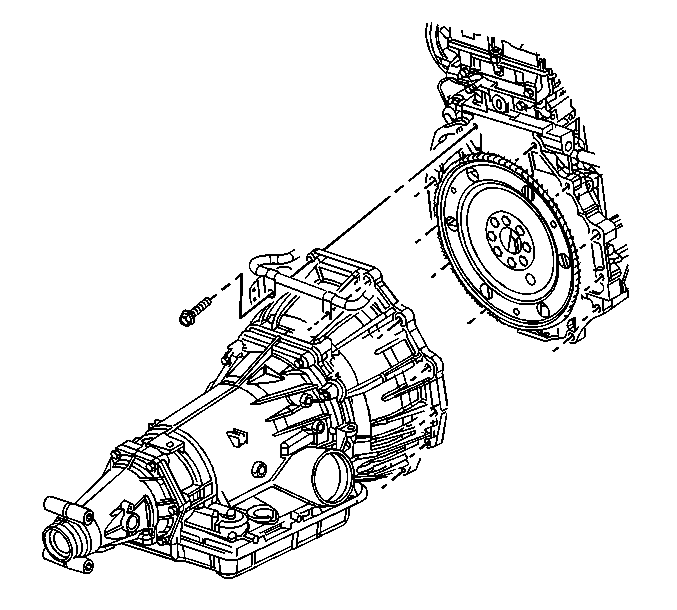
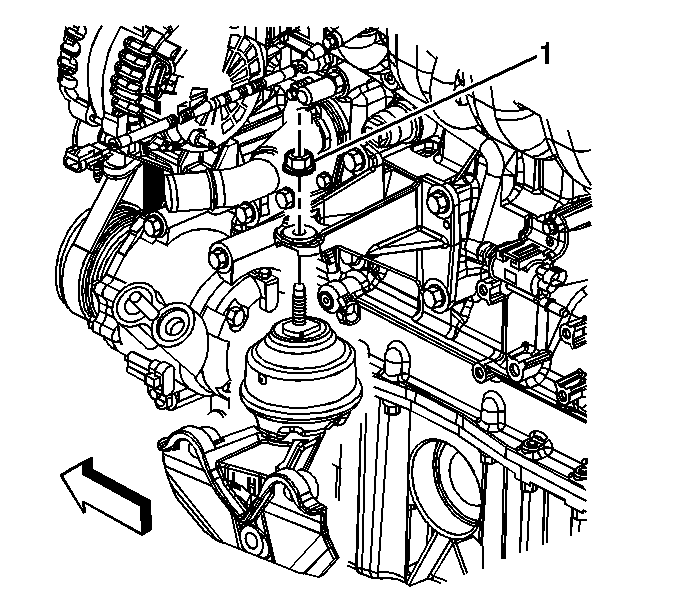
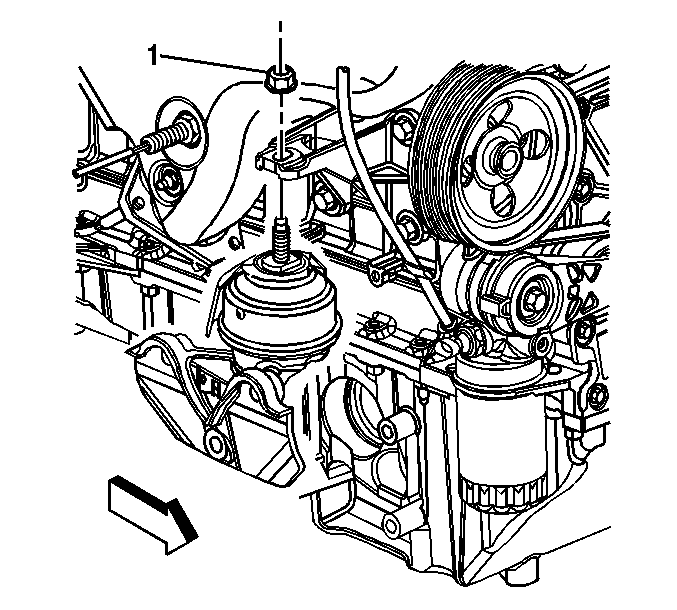
Installation Procedure
- Remove the engine from the engine stand.
- Slowly install the engine into the engine compartment aligning the engine mounts with the brackets.
- Install the AIR pipes to the engine.
- Install the fasteners securing the AIR pipes to the back of the engine head.
- When the engine mounts are aligned, install the engine mounts, putting the mount up through the engine mount brackets before inserting into the chassis mount brackets.
- Lower the engine onto the mounts and install the upper engine mount nuts (1).
- Remove the engine hoist.
- Lay the radiator into the radiator support, but do not install the radiator completely.
- Raise the vehicle. Refer to Lifting and Jacking the Vehicle in General Information.
- Install all of the lower bell housing bolts, excluding the top 4.
- Remove the 2 through bolts securing the transmission support.
- Lower the transmission.
- Install the top 4 bell housing bolts.
- Raise the transmission.
- Install the transmission support. Refer to Transmission Support Replacement in Frame and Underbody.
- Install the 3 torque converter bolts.
- Install the torque converter bolt cover.
- Install the fuel tank shield, if removed. Refer to Fuel Tank Shield Replacement in Frame and Underbody.
- Connect the secondary AIR pipes to the secondary AIR pump.
- Install the engine protection shield. Refer to Engine Protection Shield Replacement .
- Install the propeller shaft to the front axle pinion yoke. Refer to Front Propeller Shaft Replacement in Propeller Shaft.
- Connect the exhaust pipe to the manifold and secure the pipe with the bolts.
- Connect the oil pressure sensor electrical connector.
- Install the oil pan drain plug.
- Install the lower radiator hose (1).
- Install the left and right wheel drive shafts. Refer to Wheel Drive Shaft Replacement in Wheel Drive Shafts.
- Lower the vehicle.
- Install the 4 grounds on the left side of the block (1).
- Install the camshaft sensor electrical connectors.
- Install the crankshaft sensor electrical connector.
- Install the knock sensor electrical connector.
- Install the generator electrical connector and battery lead (1).
- Install the A/C pressure sensor and clutch electrical connector.
- Install starter electrical connectors and battery lead (1).
- Install the fuel lines at the fuel pressure regulator. Refer to Fuel Pressure Regulator Replacement in Engine Controls - 4.2L.
- Install the engine harness bracket and bolt.
- Install the front differential vent hose, to the engine harness bracket.
- Install all the harnesses to the engine harness bracket.
- Install the PCM. Refer to Powertrain Control Module Replacement in Engine Controls - 4.2L.
- Install the power brake hose at booster
- Install the harness retainer (1) to the original location.
- Install the ignition coil harness electrical connectors.
- Clip the transmission cooler lines to the right side of the engine block.
- Connect the camshaft phaser actuator valve electrical connector.
- Connect the front axle actuator electrical connector.
- Connect the A/C line at the accumulator.
- Install the oxygen sensor electrical connector.
- Remove the lift hook J 44220 .
- Install the secondary AIR solenoid valve. Refer to Secondary Air Injection Solenoid Valve Replacement in Engine Controls - 4.2L.
- Install the heater hoses to the heater core. Refer to Heater Inlet Hose Replacement and Heater Outlet Hose Replacement in Heating, Ventilation, and Air Conditioning.
- Install the power steering pump.
- Install the power steering pump bolts.
- Install the drive belt. Refer to Drive Belt Replacement .
- Install cooling fan and shroud, tilting the radiator forward for clearance.
- Finish installing the radiator. Refer to Radiator Replacement in Engine Cooling.
- Install transmission cooler lines together.
- Install the MAP sensor. Refer to Manifold Absolute Pressure Sensor Replacement in Engine Controls - 4.2L.
- Install the throttle body. Refer to Throttle Body Assembly Replacement in Engine Controls - 4.2L.
- Install the hood latch. Refer to Hood Latch Support Replacement in Body Front End.
- Install the head lamp housing. Refer to Headlamp Housing Panel Replacement in Body Front End.
- Install the grill. Refer to Grille Replacement in Exterior Trim.
- Install the washer solvent container. Refer to Windshield Washer Solvent Container Replacement in Wipers/Washer Systems.
- Install the air cleaner assembly. Refer to Air Cleaner Assembly Replacement in Engine Controls - 4.2L.
- Connect the negative battery cable. Refer to Battery Negative Cable Disconnection and Connection in Engine Electrical.
- Install the hood. Refer to Hood Replacement in Body Front End.
- Service the engine oil.
- Fill the cooling system. Refer to Cooling System Draining and Filling in Engine Cooling.
- Recharge the refrigerant. Refer to Refrigerant Recovery and Recharging in Heating, Ventilation and Air Conditioning.
- Perform the CKP system variation learn procedure. Refer to Crankshaft Position System Variation Learn in Engine Controls - 4.2L.
- Install the hood. Refer to Hood Replacement in Body Front End.
Notice: Refer to Fastener Notice in the Preface section.

Tighten
Tighten the nuts to 70 N·m (51 lb ft).

Tighten
Tighten all 11 bell housing bolts to 50 N·m
(37 lb ft).
Tighten
Tighten the torque converter bolts to 60 N·m
(44 lb ft).


Tighten
Tighten the exhaust pipe bolts to 50 N·m
(37 lb ft).

Tighten
Tighten the plug to 26 N·m (19 lb ft).
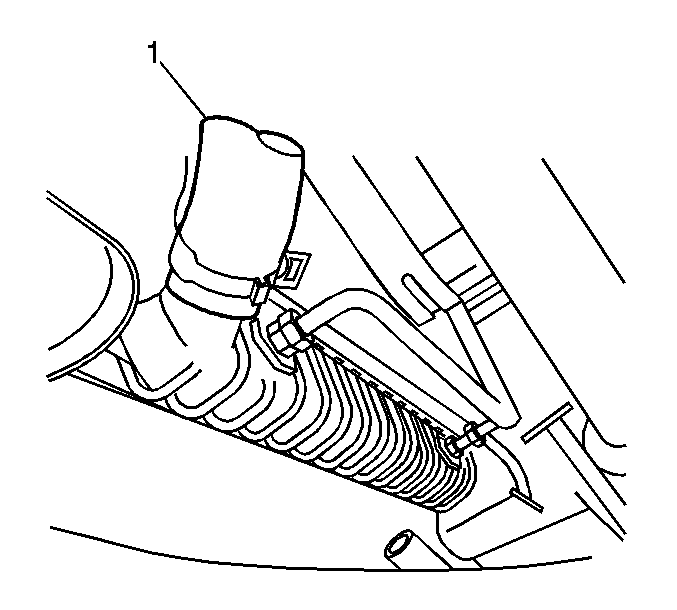


Tighten
Tighten the generator battery lead nut to 9 N·m
(80 lb in).

Tighten
Tighten the starter battery lead to 9 N·m
(80 lb in).

Tighten
Tighten the engine harness bracket bolt to 50 N·m
(37 lb ft).



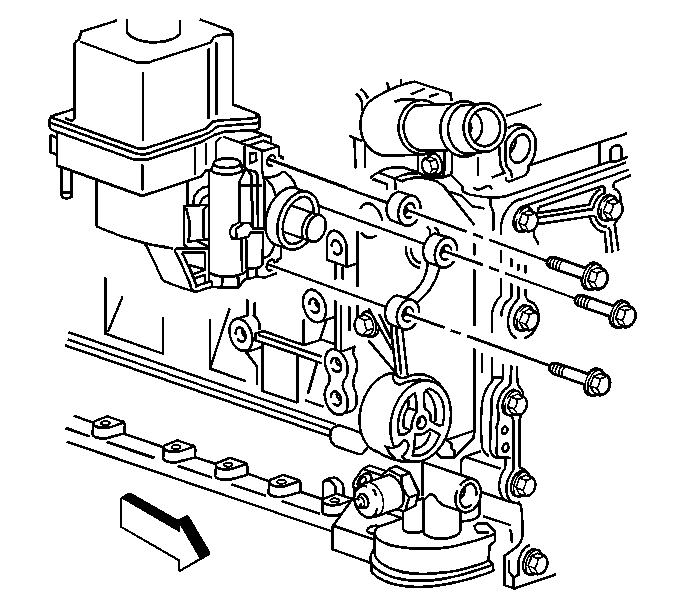
Tighten
Tighten the bolts to 25 N·m (18 lb ft).
| Important: After an overhaul, the engine should be tested. Use the following procedure after the engine is installed in the vehicle. |
| • | Disable the ignition system. |
| • | Crank the engine several times. Listen for unusual noises or evidence that parts are binding. |
| • | Enable the ignition system. |
| • | Start the engine and listen for unusual noises. |
| • | Check the vehicle oil pressure gage or light and confirm that the engine has acceptable oil pressure. |
| • | Run the engine speed at about 1000 RPM until the engine has reached normal operating temperature. |
| • | Listen for a sticking lifter and other unusual noises. |
| • | Inspect for fuel, oil and/or coolant leaks while the engine is running. |
| • | Perform a final inspection for the proper engine oil and coolant levels. |
